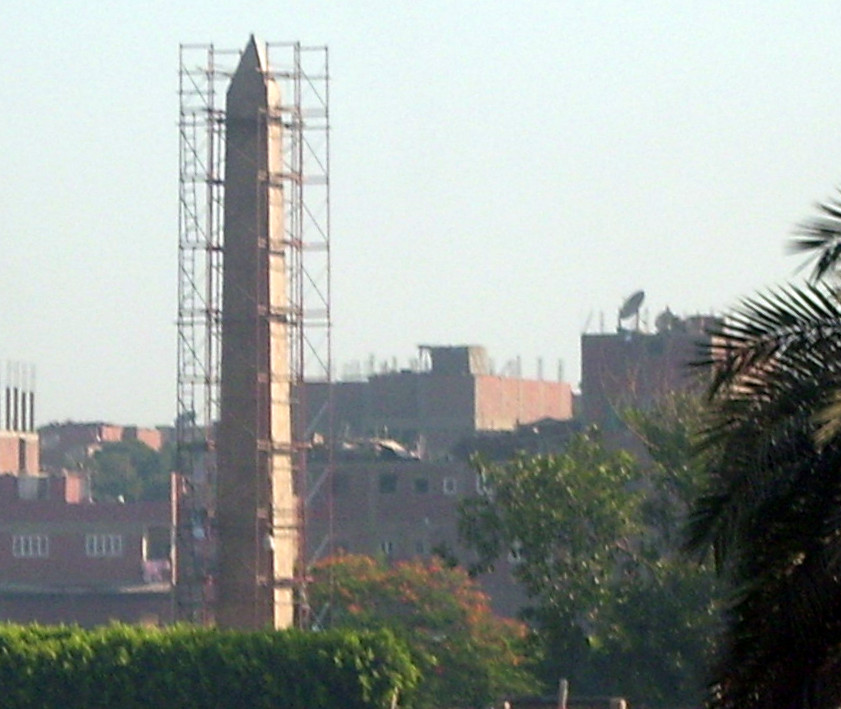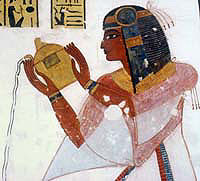|
Nebmaatre (prince)
Nebmaatre (“The Lord of the Truth is Re”) was an ancient Egyptian prince and High Priest of Re in Heliopolis during the 20th Dynasty. He is likely to have been a son of Ramesses IX since they are mentioned together on a door lintel in a Heliopolis temple. He was a brother to Prince Montuherkhepeshef; another possible brother is Pharaoh Ramesses X Khepermaatre Ramesses X (also written Ramses and Rameses) (ruled c. 1111 BC – 1107 BC) was the ninth pharaoh of the 20th Dynasty of Ancient Egypt. His birth name was Amonhirkhepeshef. His prenomen or throne name, Khepermaatre, means "The Ju .... Sources * Aidan Dodson & Dyan Hilton: ''The Complete Royal Families of Ancient Egypt''. Thames & Hudson, 2004, , pp. 191,193 {{DEFAULTSORT:Nebmaatre (Prince) Ancient Egyptian princes High Priests of Re People of the Twentieth Dynasty of Egypt Ramesses IX 12th-century BC clergy ... [...More Info...] [...Related Items...] OR: [Wikipedia] [Google] [Baidu] |
Twentieth Dynasty Of Egypt
The Twentieth Dynasty of Egypt (notated Dynasty XX, alternatively 20th Dynasty or Dynasty 20) is the third and last dynasty of the Ancient Egyptian New Kingdom period, lasting from 1189 BC to 1077 BC. The 19th and 20th Dynasties furthermore together constitute an era known as the ''Ramesside period''. This dynasty is generally considered to be the start of the decline of Ancient Egypt. History Background Upon the death of the last pharaoh of the 19th Dynasty, Queen Twosret, Egypt descended into a period of civil war, as attested by the Elephantine stela built by Setnakhte. The circumstances of Twosret's demise are uncertain, as she may have died peacefully during her reign or been overthrown by Setnakhte, who was likely already middle aged at the time. 20th Dynasty A consistent theme of this dynasty was the loss of pharaonic power to the High Priests of Amun. Horemheb, a pharaoh of the 18th Dynasty, had restored the traditional Ancient Egyptian religion and the priesthood ... [...More Info...] [...Related Items...] OR: [Wikipedia] [Google] [Baidu] |
Ramesses IX
Neferkare Setepenre Ramesses IX (also written Ramses) (originally named Amon-her-khepshef Khaemwaset) (ruled 1129–1111 BC) was the eighth pharaoh of the Twentieth Dynasty of Egypt. He was the third longest serving king of this Dynasty after Ramesses III and Ramesses XI. He is now believed to have assumed the throne on I Akhet day 21 based on evidence presented by Jürgen von Beckerath in a 1984 GM article. According to Papyrus Turin 1932+1939, Ramesses IX enjoyed a reign of 18 years and 4 months and died in his 19th Year in the first month of Peret between day 17 and 27. His throne name, Neferkare Setepenre, means "Beautiful Is The Soul of Re, Chosen of Re." Ramesses IX is believed to be the son of Mentuherkhepeshef, a son of Ramesses III, since Mentuherkhopshef's wife, the lady Takhat bears the prominent title of King's Mother on the walls of tomb KV10, which she usurped and reused in the late 20th Dynasty; no other 20th Dynasty king is known to have had a mother with this name ... [...More Info...] [...Related Items...] OR: [Wikipedia] [Google] [Baidu] |
High Priest Of Re
The High Priest of Ra or of Re was known in Egyptian as the ''wr-mꜢw'', which translates as Greatest of Seers. The main cult of Ra was in ancient Heliopolis, northeast of present-day Cairo. The high priests of Ra are not as well documented as the high priests of other deities such as Amun and Ptah. Old Kingdom ;Old Kingdom (c. 2686 BCE – 2181 BCE) * Imhotep, time of Djoser, Third Dynasty * Prince Rahotep, possibly son of Sneferu, Fourth Dynasty Middle Kingdom ; Middle Kingdom (c. 2055 BCE–1550 BCE) * Nubkaura-ankh, from offering table and rock inscription * Khakaureemhat, papyrus from Lahun * Maakherure-emhutaat, seal * Ra, seal * Khentyhetep Iyemiatib, seal * Iuefsenef, seal New Kingdom ; New Kingdom (c. 1550 BCE–1069 BCE) ;; Eighteenth Dynasty * Ahmose, son of Amenhotep II. Served during the reign of Thutmose IV * Pawah served during the reign of Akhenaten ;;Nineteenth Dynasty * Bak (High Priest of Re) Bak was a royal charioteer and later high priest of Re. ... [...More Info...] [...Related Items...] OR: [Wikipedia] [Google] [Baidu] |
Heliopolis (Ancient Egypt)
Heliopolis (I͗wnw, Iunu or 𓉺𓏌𓊖; egy, I͗wnw, 'the Pillars'; cop, ⲱⲛ; gr, Ἡλιούπολις, Hēlioúpοlis, City of the Sun) was a major city of ancient Egypt. It was the capital of the 13th or Heliopolite Nome of Lower Egypt and a major religious centre. It is now located in Ayn Shams, a northeastern suburb of Cairo. Heliopolis was one of the oldest cities of ancient Egypt, occupied since the Predynastic Period.. It greatly expanded under the Old and Middle Kingdoms but is today mostly destroyed, its temples and other buildings having been scavenged for the construction of medieval Cairo. Most information about the ancient city comes from surviving records. The major surviving remnant of Heliopolis is the obelisk of the Temple of Ra-Atum erected by Senusret I of Dynasty XII. It still stands in its original position, now within Al-Masalla in Al-Matariyyah, Cairo. The high red granite obelisk weighs 120 tons (240,000 lbs) and is believed to be the ... [...More Info...] [...Related Items...] OR: [Wikipedia] [Google] [Baidu] |
Twentieth Dynasty Of Egypt
The Twentieth Dynasty of Egypt (notated Dynasty XX, alternatively 20th Dynasty or Dynasty 20) is the third and last dynasty of the Ancient Egyptian New Kingdom period, lasting from 1189 BC to 1077 BC. The 19th and 20th Dynasties furthermore together constitute an era known as the ''Ramesside period''. This dynasty is generally considered to be the start of the decline of Ancient Egypt. History Background Upon the death of the last pharaoh of the 19th Dynasty, Queen Twosret, Egypt descended into a period of civil war, as attested by the Elephantine stela built by Setnakhte. The circumstances of Twosret's demise are uncertain, as she may have died peacefully during her reign or been overthrown by Setnakhte, who was likely already middle aged at the time. 20th Dynasty A consistent theme of this dynasty was the loss of pharaonic power to the High Priests of Amun. Horemheb, a pharaoh of the 18th Dynasty, had restored the traditional Ancient Egyptian religion and the priesthood ... [...More Info...] [...Related Items...] OR: [Wikipedia] [Google] [Baidu] |
Montuherkhepeshef (son Of Ramesses IX)
Mentuherkhepeshef was an ancient Egyptian prince of the 20th Dynasty, a son of pharaoh Ramesses IX., p.193 His name also occurs as ''Ramesses-Montuherkhepeshef.'' He is likely to have been the brother of pharaoh Ramesses X and prince Nebmaatre. He was buried in his tomb KV19 in the Valley of the Kings, which was probably originally made for Ramesses VIII Usermaatre Akhenamun Ramesses VIII (also written Ramses and Rameses) or Ramesses Sethherkhepshef Meryamun ('Set is his Strength, beloved of Amun') (reigned 1130–1129 BC, or 1130 BC), was the seventh Pharaoh of the Twentieth Dynasty of the New Ki ....Dodson & Hilton, p.194 His titles were: ''First King's Son of his Body; Eldest King's Son of his Body; Generalissimo''; and ''Executive at the Head of the Two Lands.'' Sources Ancient Egyptian princes People of the Twentieth Dynasty of Egypt Ramesses IX {{AncientEgypt-bio-stub ... [...More Info...] [...Related Items...] OR: [Wikipedia] [Google] [Baidu] |
Ramesses X
Khepermaatre Ramesses X (also written Ramses and Rameses) (ruled c. 1111 BC – 1107 BC) was the ninth pharaoh of the 20th Dynasty of Ancient Egypt. His birth name was Amonhirkhepeshef. His prenomen or throne name, Khepermaatre, means "The Justice of Re Abides." His accession day fell on 1 ''prt'' 27 (first month of the Winter season, day 27). His highest attested regnal year is year 3. The highest attested date in his reign is either "year 3, second month of the Inundation season, day 2" or possibly "year 3, month 4 (no day given)". Since Ramesses XI came to the throne on 3 ''šmw'' 20 (third month of the Summer season, day 20), it automatically follows that Ramesses X must have lived into an as yet unattested regnal year 4. The theory put forward on astronomical grounds by Richard Parker that Ramesses X may have reigned for 9 years, has since been abandoned. Likewise, the suggested ascription of Theban graffito 1860a to a hypothetical year 8 of Ramesses X is no longer supp ... [...More Info...] [...Related Items...] OR: [Wikipedia] [Google] [Baidu] |
Ancient Egyptian Princes
Ancient history is a time period from the beginning of writing and recorded human history to as far as late antiquity. The span of recorded history is roughly 5,000 years, beginning with the Sumerian cuneiform script. Ancient history covers all continents inhabited by humans in the period 3000 BCAD 500. The three-age system periodizes ancient history into the Stone Age, the Bronze Age, and the Iron Age, with recorded history generally considered to begin with the Bronze Age. The start and end of the three ages varies between world regions. In many regions the Bronze Age is generally considered to begin a few centuries prior to 3000 BC, while the end of the Iron Age varies from the early first millennium BC in some regions to the late first millennium AD in others. During the time period of ancient history, the world population was already exponentially increasing due to the Neolithic Revolution, which was in full progress. While in 10,000 BC, the world population stood ... [...More Info...] [...Related Items...] OR: [Wikipedia] [Google] [Baidu] |
High Priests Of Re
High may refer to: Science and technology * Height * High (atmospheric), a high-pressure area * High (computability), a quality of a Turing degree, in computability theory * High (tectonics), in geology an area where relative tectonic uplift took or takes place * Substance intoxication, also known by the slang description "being high" * Sugar high, a misconception about the supposed psychological effects of sucrose Music Performers * High (musical group), a 1974–1990 Indian rock group * The High, an English rock band formed in 1989 Albums * ''High'' (The Blue Nile album) or the title song, 2004 * ''High'' (Flotsam and Jetsam album), 1997 * ''High'' (New Model Army album) or the title song, 2007 * ''High'' (Royal Headache album) or the title song, 2015 * ''High'' (EP), by Jarryd James, or the title song, 2016 Songs * "High" (Alison Wonderland song), 2018 * "High" (The Chainsmokers song), 2022 * "High" (The Cure song), 1992 * "High" (David Hallyday song), 1988 * "H ... [...More Info...] [...Related Items...] OR: [Wikipedia] [Google] [Baidu] |
People Of The Twentieth Dynasty Of Egypt
A person ( : people) is a being that has certain capacities or attributes such as reason, morality, consciousness or self-consciousness, and being a part of a culturally established form of social relations such as kinship, ownership of property, or legal responsibility. The defining features of personhood and, consequently, what makes a person count as a person, differ widely among cultures and contexts. In addition to the question of personhood, of what makes a being count as a person to begin with, there are further questions about personal identity and self: both about what makes any particular person that particular person instead of another, and about what makes a person at one time the same person as they were or will be at another time despite any intervening changes. The plural form "people" is often used to refer to an entire nation or ethnic group (as in "a people"), and this was the original meaning of the word; it subsequently acquired its use as a plural form of per ... [...More Info...] [...Related Items...] OR: [Wikipedia] [Google] [Baidu] |







_1938.jpg)